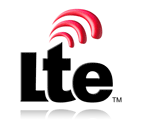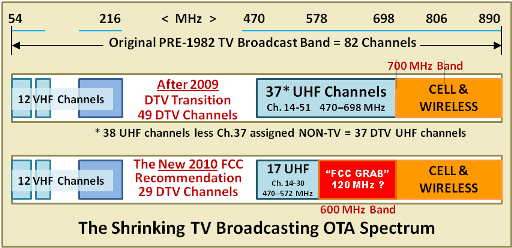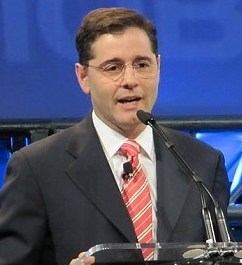 November 7 will be an important day if you are a rural AT&T landline customer. On that date, AT&T, in concert with Wall Street, plans to announce the future of its rural and “tier two-smaller city” landline business.
November 7 will be an important day if you are a rural AT&T landline customer. On that date, AT&T, in concert with Wall Street, plans to announce the future of its rural and “tier two-smaller city” landline business.
The implications for customers are enormous. AT&T could elect to exit and auction off its rural customers to companies like Windstream, Frontier Communications, CenturyLink, and FairPoint Communications. AT&T could also announce it will aggressively petition the Federal Communications Commission to decommission its copper landline facilities in favor of a new wireless IP network based largely on its national 4G LTE expansion, or it could be a combination of both: keeping existing landline facilities but transitioning them to Voice over IP technology with a gradual shift towards wireless.
AT&T CEO Randall Stephenson delivered important clues about the company’s direction in remarks at yesterday’s Goldman Sachs Communacopia Conference, attended primarily by Wall Street investors. Stephenson drew clear distinctions between valued customers in areas upgraded to AT&T’s U-verse platform and more problematic customers in smaller communities where AT&T refuses to invest in landline upgrades.
“Where you look at the footprint where we have deployed U-verse technology we do very well,” Stephenson said. “In fact we are the share leader in virtually all U-verse markets. Those markets grow nicely. Where we have not deployed fiber and U-verse technology, we are losing share and those markets are in decline and that is the whole reason behind this analysis and evaluation that we will be laying out Nov. 7. What do we do with those markets? Because we have demonstrated if you go invest you can grow the market.”
“We said coming into the year that we have to find a broadband solution for these assets that is cost-effective or we need to look at selling them,” Stephenson said. “I would just tell you at the 30,000 foot [line length] level we think we’re finding line of sight to some investment theses here. We can get a good competitive broadband product to a large portion of our footprint and would avoid us having to go through a number of regulatory approval processes to sell [landlines] across a large geography. There will probably be a mix of actions here, but the bottom line is we think we may have line of sight but we will flush that out on Nov. 7 in an analyst conference here in New York.”
Early indications suggest the company is considering deploying DSL extenders to reach a larger share of rural customers without a complete overhaul of its copper wire network. The upgrades could deliver results similar to what Frontier Communications has been doing in territories it acquired from Verizon Communications, which includes extending fiber optics further into neighborhoods and finding ways to reduce copper wire length to improve speeds. Frontier has set its sights on delivering up to 25Mbps over copper landlines, a speed it feels is competitive with cable broadband. AT&T could come close to these speeds without the amount of investment required in a typical U-verse deployment.
But just as likely is a largely wireless broadband solution to replace the company’s aging copper wire-based DSL service. Stephenson says he strongly believes that a wireless solution exists for rural America over the company’s new LTE 4G network.
“I don’t envision in major metropolitan dense population centers that LTE will serve as a broad-based fixed-line replacement or surrogate,” Stephenson said. “I do believe in less dense markets and especially when you begin to think about rural America and tier two towns, that LTE can become a fixed line replacement or even better than what you can get in fixed line out in those markets. This is one of the exciting things about the WCS spectrum [AT&T plans to acquire]. It allows you to truly begin to think about investing in and doing this.”
But AT&T’s solutions will come with strings attached: a lobbying effort to get the FCC to loosen up on regulations, acquire more wireless spectrum, and allow the company to dispose of its landline infrastructure.
“You don’t go out and put in LTE capability in rural America and leave up all your copper infrastructure in the long haul,” said Stephenson. “It just wouldn’t make sense to do both. So this is the big regulatory issue. The FCC would require us to leave that copper and TDM fixed-line infrastructure up by some mandated rules and you can’t do both. You can’t support both infrastructures. We have got to work through the regulatory implications of this, but I think LTE can prove over time to be a fixed line replacement in rural and less dense populations. I think in a five year time horizon that can become significant.”
Thus far, AT&T has been unwilling to consider upgrading smaller communities to its U-verse platform, primarily because of the cost and return on investment. The company is content with its current U-verse footprint and has begun to enjoy increased wireline margins from a growing number of urban customers as programming costs decline.
“The U-verse margins continue to expand,” Stephenson noted. “U-verse is one of those where you go make a really significant capital investment and then you go in as a new entrant to do programming contracts and you’re paying multiples of what the big scale guys are paying and then as you scale that over time then margins really begin to expand. We’re riding that right now and we’re getting really good margin expansion just out out of scaling U-verse and getting better economics on content terms as well.”
Wall Street has been applying pressure to Stephenson to extract higher margins and cut costs from its traditional landline business. Stephenson sought to placate concerns about the cost profile of AT&T landlines before investors.
“We have done a nice job controlling our labor costs and that has been very helpful to continue to sustain margins in the fixed line business,” Stephenson said. “Those labor costs savings we take and reinvest back in the business in the form of U-verse and looking at some future investments as well.”
Stephenson hopes the FCC will eventually let AT&T abandon traditional landline service everywhere, which could also deliver serious cost savings for AT&T.
“I do believe if we can find a path to an all-IP infrastructure in not just your major metropolitan areas but your tier two markets there are significant cost savings in the five or six year time horizon that could come out of these businesses as well,” he noted.
AT&T CEO Randall Stephenson took questions at Goldman Sachs’ Communacopia Conference about its wireless network and the future of the rural landline business. (September 19, 2012) (41 minutes)
You must remain on this page to hear the clip, or you can download the clip and listen later.


 Subscribe
Subscribe












